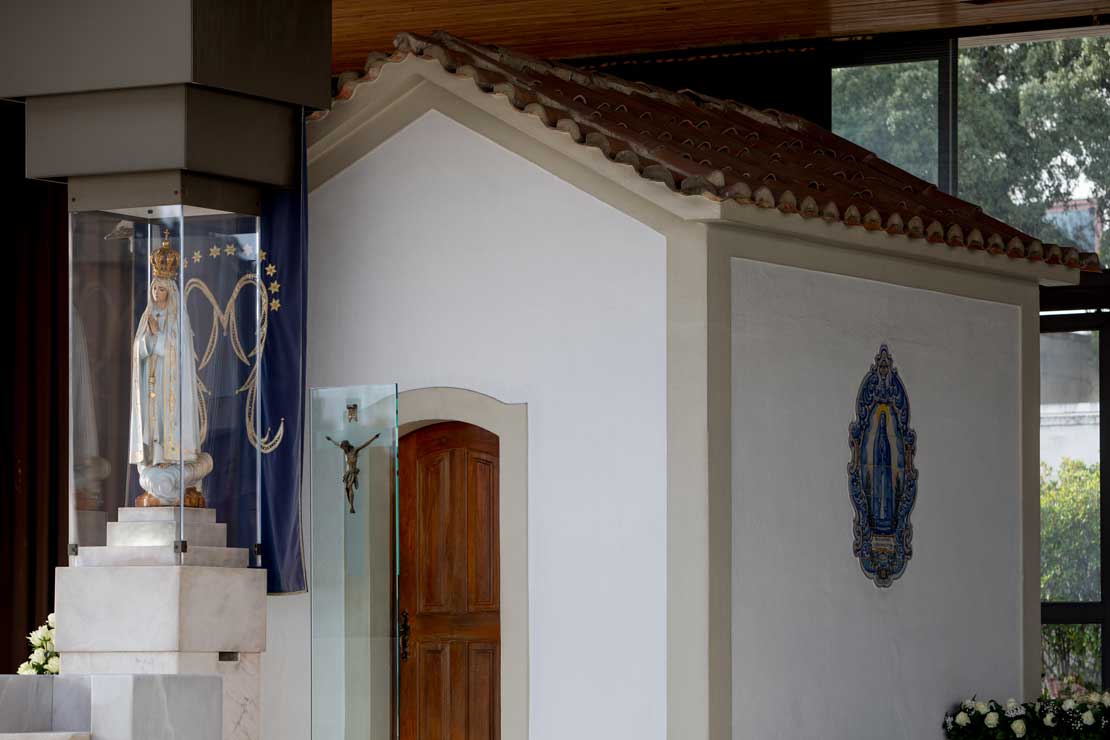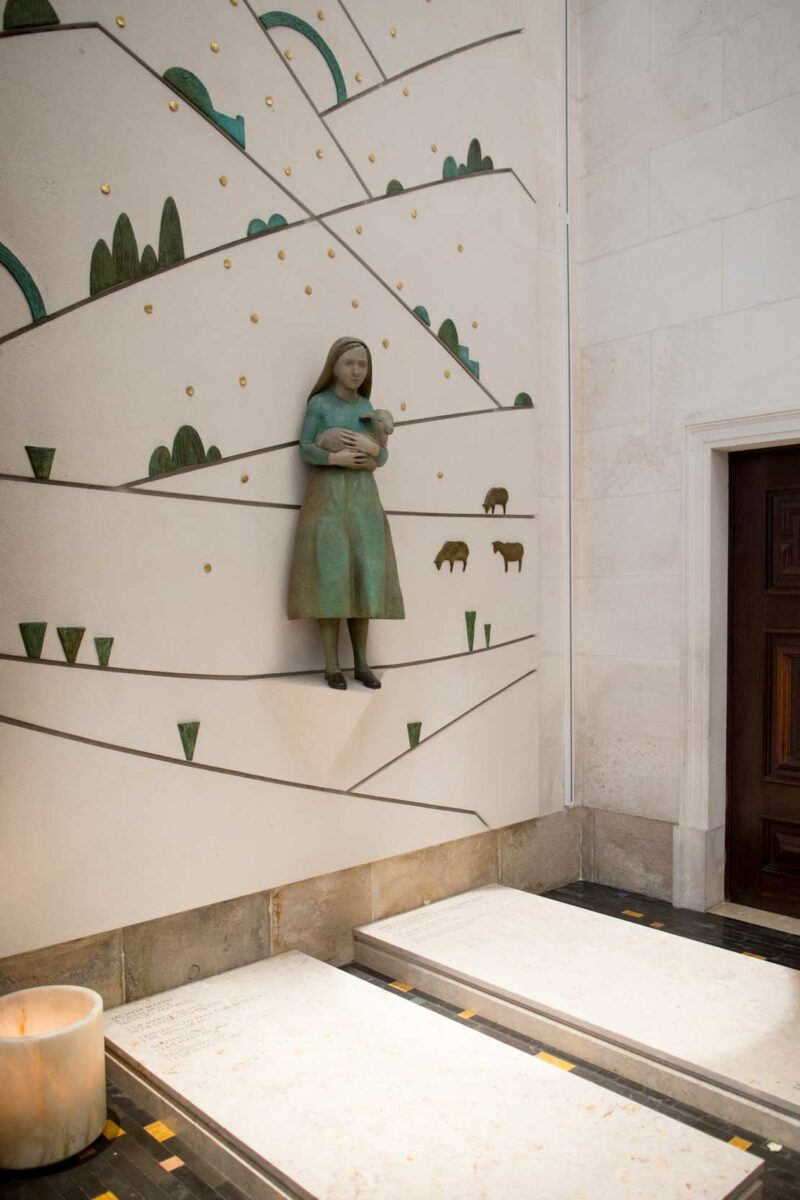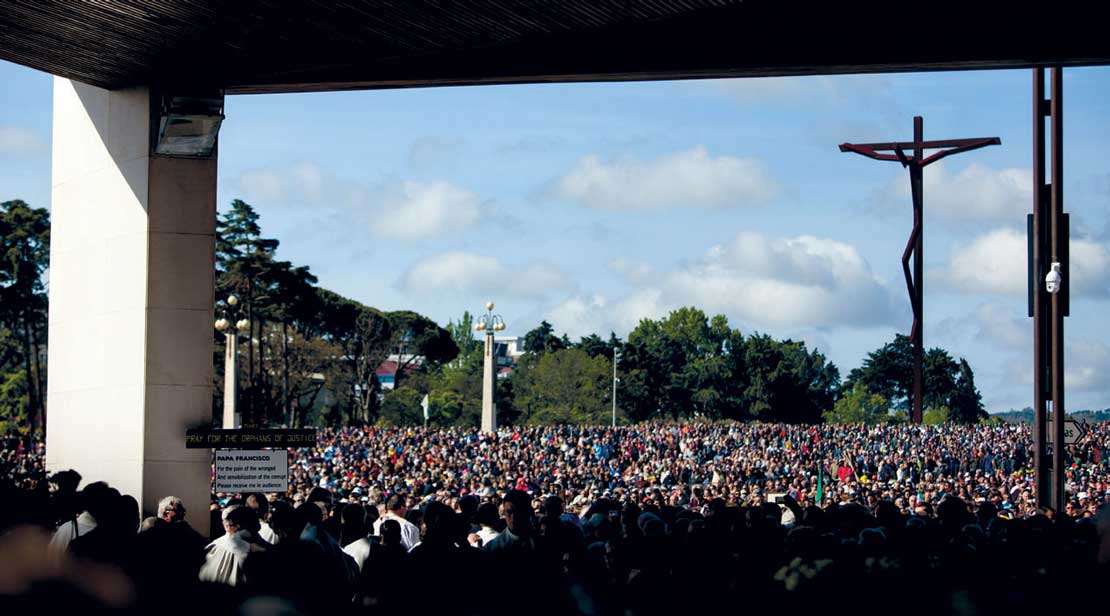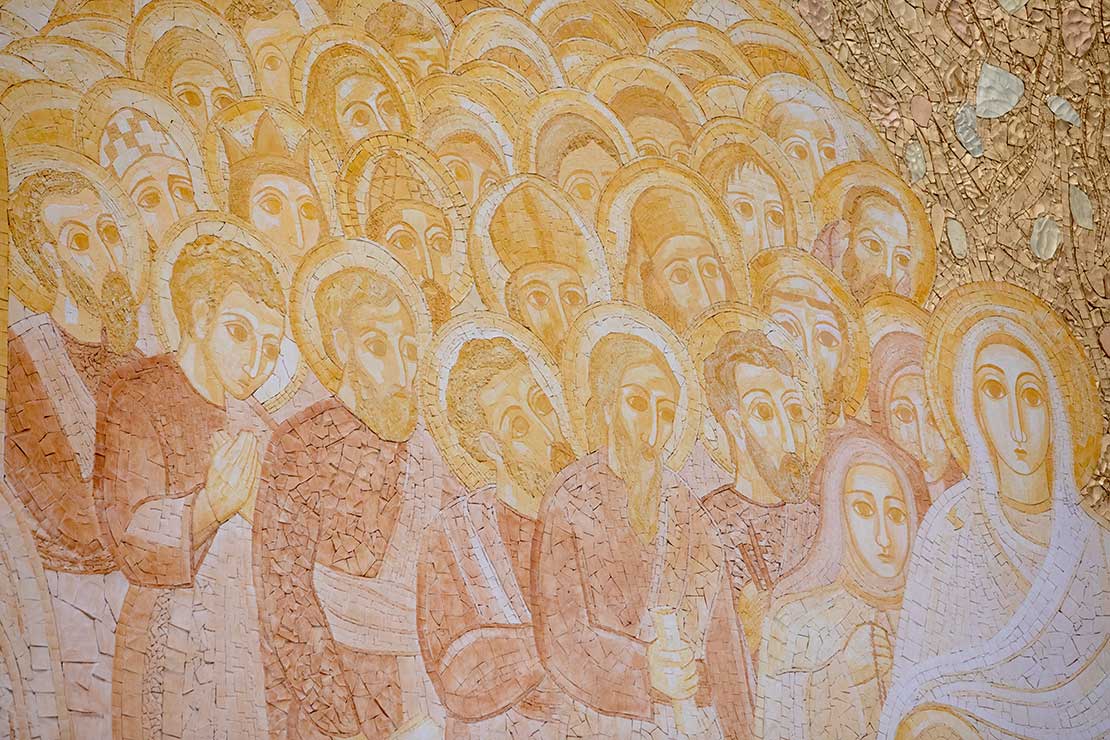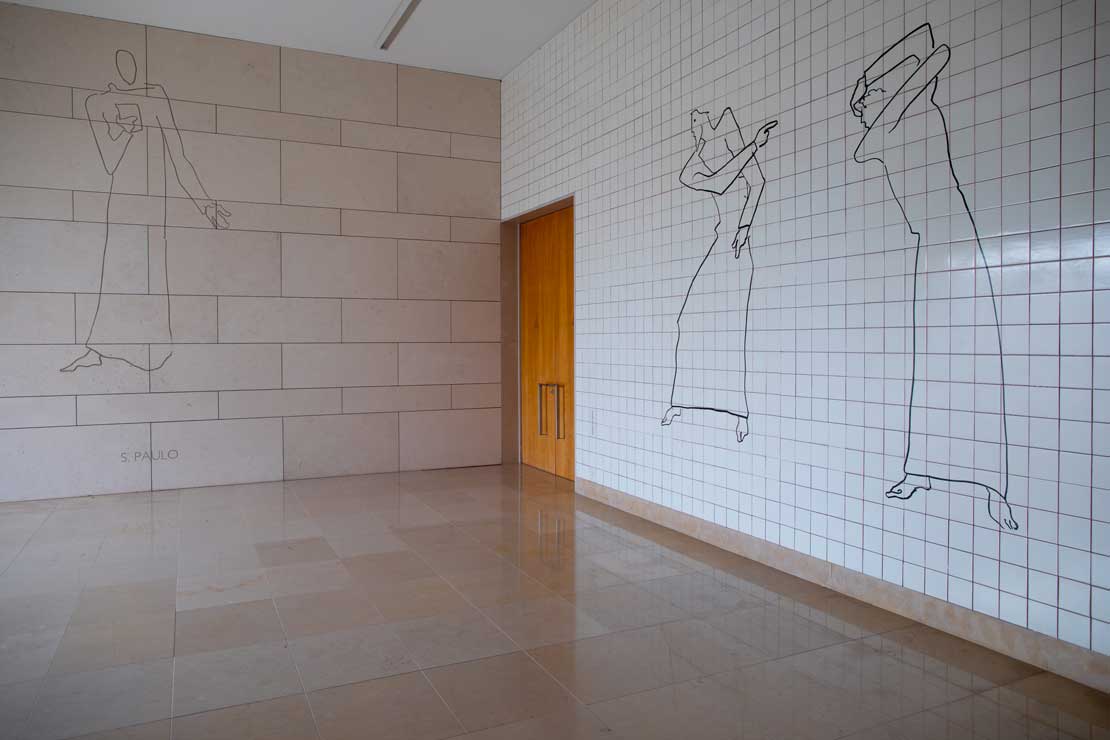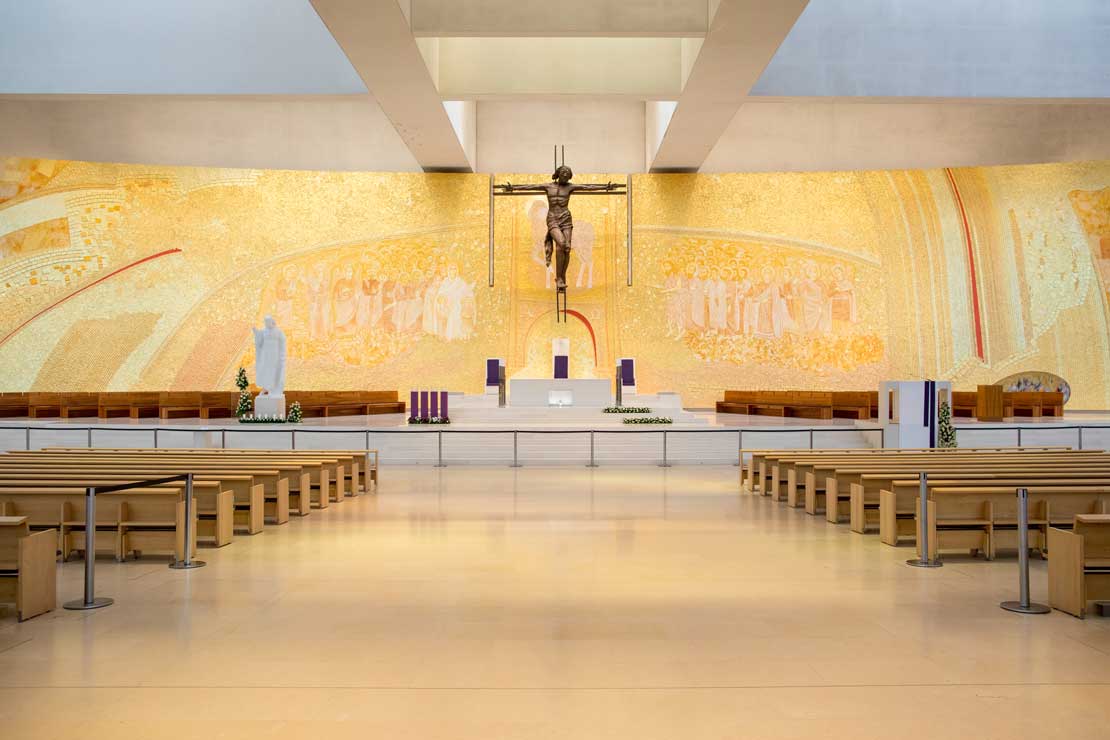The Sanctuary of Fátima
Pilgrimage site and art space
The walking paths and itineraries lead us to Fátima in a true spirit of pilgrimage. On arrival at the Sanctuary, we encounter an emblematic site where religion and art are intertwined.
The Sanctuary stands on the site of Cova da Iria, the location where the Virgin appeared to the three shepherd children in 1917. Around this remote territory populated by olive trees and holm oaks, the sanctuary was erected and the city of Fátima grew, a city whose history is inseparable from the apparitions and the construction of the sanctuary.
It was in this wild and beautiful natural environment that the Virgin appeared to the three young shepherds (Jacinta, Francisco and Lúcia) in one of the holm oaks in 1917. Preserved from this antique landscape in the area around the sanctuary is a large holm oak, currently located next to the small chapel erected on the site of the apparitions.
A meeting place for pilgrims and visitors and a place of faith, the sanctuary is also a space dedicated to artistic expression.
The Sanctuary consists of a series of monumental structures, including the Chapel of the Apparitions (built in 1919), the Basilica of Our Lady of the Rosary and the Church of the Holy Trinity.
The Basilica of Our Lady of the Rosary of Fátima and the Church of the Holy Trinity reflect mutually distinct architectural and aesthetic orientations. Their spatial organisation facing each other across a large plaza creates an enormous space for prayer, where millions of pilgrims gather. Another setting dedicated to prayer and important religious ceremonies, the Chapel of the Apparitions stands in a location visible to all assembled pilgrims and is protected by a large covered gallery.
Exquisite art and architecture combine to create an atmosphere of sophistication throughout the Sanctuary. Responding to the unique requirements of space, climate and materials, the various artworks serve in particular to reflect and enhance the site’s prevailing spiritual ambience.
Designed by Gerardus Samuel van Krieken (1864-1933), the first stone of the Basilica of Our Lady of the Rosary was laid on 13 May 1928. Its consecration took place on 7 October 1953. The façade of the Basilica is preceded by an imposing staircase that extends in a colonnade, designed by architect António Lino (1914-1961). In their structural form, the basilica and colonnade merge together to form the ample prayer space, creating an amphitheatre open to the world and for the spiritual advancement and participation of the faithful.
The sculptural elements of the colonnade (executed from 1953 onwards) are the creative expressions of various sculptors, including Álvaro de Brée (1903-1962), António Duarte (1912-1998), Leopoldo de Almeida (1898-1975), Salvador Barata Feyo (1899-1990), Domingos Soares Branco (1925-2013), Maria Amélia Carvalheira (1904-1998), Sousa Caldas (1894-1965), Vasco Pereira da Conceição (1914-1992), Irene Vilar (1930-2008), José M. Mouta Barradas and Vítor Godinho Marques. The sculpture representing the Immaculate Heart of Mary was placed in the centre of the basilica’s façade on 13 May 1958 and is a work by the sculptor and Dominican monk Thomas MacGlynn (1906-1977).
The works of art inside the temple are equally representative. The statue of São Domingos Gusmão is the work of Maria Amélia Carvalheira (1904-1998). Those of St. António Maria Claret and St. John Eudes are the work of Martinho de Brito, while the statue of St. Stephen of Hungary is by António Amaral Paiva. The representation of the shepherds is the work of two contemporary sculptors: José Rodrigues created the representation of St. Francisco Marto and Clara Menéres that of St. Jacinta Marto.
Works notable for their emotional spontaneity and for the coherence of their formal language, the 14 golden bronzes of the Mysteries of the Rosary are also the work of Martinho de Brito.
The works of high relief on the vault of the main chapel are by Maximiano Alves (1888-1954), while the stained-glass windows on the lateral altars were developed by João de Sousa Araújo (n. 1929) and present the litany of Our Lady. The 15 mosaic panels are the work of Fred Pittino (1906-1991).
Within the Sanctuary’s enclosure stands the Nativity scene, originally presented in the exterior space in 1999 by the sculptor José Aurélio. The piece is notable for its modern design, charged with symbolism and iconographic references. In the form of a 5-metre-high elongated triangle in stainless steel, it presents an angel with raised wings welcoming and heralding the birth of Jesus.
Inaugurated on 12 October 2007, the Church of the Holy Trinity opened a new dialogue of convergence and community, inviting meditation, prayer and communion. Designed by Greek architect Alexandros Tombazis (b. 1939), the church incorporates national and international artistic elements in a considered blending of art and architecture.
The artworks in the new temple were commissioned from a diverse range of renowned contemporary artists. Álvaro Siza-Vieira (b. 1933) painted the tiled panel dedicated to the Apostles Peter and Paul and located on the lower floor of the Church. Pedro Calapez (b. 1953) created the main portico, while Francisco Providência (b. 1961) is responsible for the names of the Apostles to which the side doors of the temple are dedicated. The Canadian artist Joe Kelly designed the front wall of serigraphed glass in countless languages, while Slovenian artist Ivan Rupnik produced the gold leaf mosaic which adorns the wall of the Presbytery, the New Jerusalem of the Apocalypse of St. John. Irish artist Catherine Green conceived the great bronze crucifix suspended over the altar, while Italian artist Benedetto Pietrogrande carved the image of Our Lady in Carrara marble for the Presbytery. Outside, the Cross over the Sanctuary of Fátima was produced by German artist Robert Schad, while the monumental statue of Pope John Paul II is the work of Polish artist Czesław Dzwigaj.
